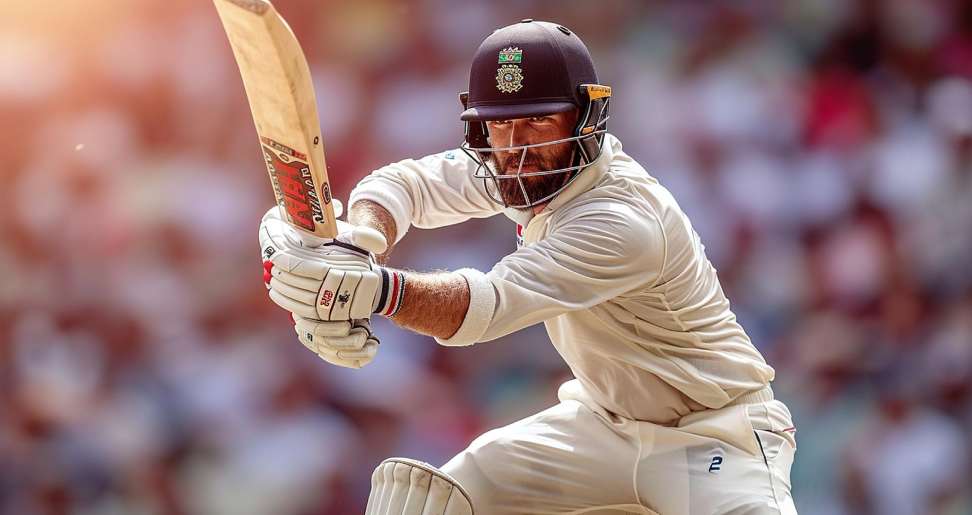Cricket is more than just a game; it is a cultural phenomenon that brings people from diverse backgrounds together. For cricketers, touring different countries provides not only an opportunity to showcase their skills on the field but also a chance to experience the unique cultures of the places they visit. These tours often become a melting pot of cultures, traditions, and customs, creating unforgettable experiences for the players. While the game remains the focal point, the cultural experiences these athletes encounter leave a lasting impact, shaping their worldviews and enriching their lives. This exploration of culture often includes the discovery of local cuisines, festivals, languages, and even the differing styles of hospitality. For instance, a cricketer playing for Laser247 could be touring England or India, and the cultural experiences would be starkly different, each offering its own unique charm and challenges.
When cricketers travel for international tours, they are often greeted with traditions that are vastly different from their own. This immersion in new cultures allows them to broaden their horizons and embrace diversity. For instance, when touring the subcontinent, Western cricketers are often fascinated by the fervor and passion that cricket evokes among local fans. The stadiums, filled with thousands of cheering fans, provide an electrifying atmosphere unlike any other. Players touring countries like India, Pakistan, or Sri Lanka are treated to a sensory overload of colors, sounds, and tastes. The street food, vibrant markets, and traditional music create an unforgettable backdrop that enhances the cricketing experience. Similarly, the hospitality in these regions is legendary; teams are often welcomed with garlands, traditional dances, and local delicacies, providing a glimpse into the local way of life. For instance, during a Play99exch tour in India, players might find themselves attending a Diwali celebration or participating in a Holi festival, both of which offer a deep dive into the cultural fabric of the country.
However, cultural experiences are not limited to the subcontinent. When cricketers tour countries like Australia, England, or New Zealand, they encounter a different set of cultural norms and practices. In Australia, the laid-back and friendly attitude of the locals often contrasts with the intense competitiveness on the cricket field. Players may find themselves enjoying a barbecue by the beach, surfing the waves, or exploring the Outback, all while preparing for a high-stakes match. The famous Australian humor and camaraderie are also integral parts of the cultural experience. In England, cricketers are often captivated by the country’s rich history and traditions. Touring the iconic Lords Cricket Ground, often referred to as the ‘Home of Cricket,’ is a pilgrimage of sorts for many players. Beyond the pitch, they might indulge in traditional English teas, explore historic castles, or enjoy the local pubs. The culture in England, with its mix of old-world charm and modern vibrancy, offers a unique experience that combines cricketing heritage with cultural exploration.
Cricketers touring the Caribbean, on the other hand, experience a completely different vibe. The Caribbean islands are known for their laid-back lifestyle, beautiful beaches, and festive atmosphere. Here, cricket is not just a sport but a way of life, deeply ingrained in the local culture. The players are often swept up in the joyous spirit of the Caribbean, where music, dance, and cricket intermingle seamlessly. The lively crowds, the rhythmic beats of calypso and reggae, and the vibrant street parades make for a cricketing tour unlike any other. Players often relish the opportunity to unwind on the pristine beaches, enjoy fresh seafood, and partake in local celebrations. This unique blend of cricket and carnival creates memories that last a lifetime, proving that the cultural experiences off the field can be just as exhilarating as the game itself.
Language is another important aspect of cultural experiences for cricketers. Touring different countries often requires players to navigate language barriers, which can be both challenging and amusing. In some cases, players pick up basic phrases to communicate with fans, order food, or understand local customs. This effort to connect with locals in their own language is often met with warmth and appreciation, fostering a sense of camaraderie and mutual respect. It also allows players to gain a deeper understanding of the culture they are experiencing. For example, cricketers touring South Africa might learn a few phrases in Afrikaans or Zulu, while those playing in the West Indies might get accustomed to the local Creole or Patois. These linguistic experiences not only enhance the players’ cultural understanding but also endear them to the local fans.
Moreover, cricketers often have the opportunity to engage in philanthropic activities during their tours, which provides another layer to their cultural experiences. Many players participate in charity events, visit local schools, or engage with underprivileged communities. These interactions often leave a profound impact on the players, as they witness firsthand the challenges faced by people in different parts of the world. Such experiences foster a sense of empathy and global citizenship, encouraging players to use their platform to make a positive difference. In countries like India, Sri Lanka, or Bangladesh, players often visit cricket academies or participate in community cricket events, providing budding cricketers with inspiration and guidance. These experiences go beyond the game, allowing players to contribute to the growth of cricket at the grassroots level while also giving back to the communities that support them.
However, it is not just the players who benefit from these cultural exchanges; the fans too have a lot to gain. When cricketers visit different countries, they become ambassadors of their own cultures, sharing their customs, traditions, and values with the local population. This exchange fosters mutual understanding and respect, bridging cultural divides and promoting a sense of unity. The fans, in turn, get a chance to learn more about the countries these players come from, gaining insights into their lifestyles, traditions, and cuisines. This cultural interplay enhances the global appeal of cricket, making it a truly international sport that transcends borders.
As cricketers continue to tour different countries, they accumulate a wealth of cultural experiences that shape them both as players and as individuals. The exposure to different ways of life, customs, and traditions enriches their perspectives, making them more adaptable and open-minded. These experiences also foster a sense of humility and gratitude, as players learn to appreciate the diverse cultures and people that make up the global cricketing community. Whether it’s through attending a traditional dance in Sri Lanka, participating in a local festival in the Caribbean, or simply sharing a meal with fans in Australia, these cultural encounters leave an indelible mark on the players, reminding them of the unifying power of sport.
In conclusion, the cultural experiences of cricketers while touring different countries are as diverse as the game itself. From the vibrant streets of Mumbai to the serene beaches of Barbados, each tour presents a unique opportunity for players to immerse themselves in new cultures and traditions. These experiences go beyond the cricket field, enriching the players’ lives and fostering a greater understanding of the world around them. For players, such as those representing Lotus365, the game of cricket becomes a passport to a world of cultural exploration, learning, and growth. As they travel across continents, cricketers become ambassadors of goodwill, bridging cultural divides and bringing people closer together through the shared love of the game. This cultural journey is an integral part of their careers, adding depth and meaning to their roles as international sportsmen.
Read Also
- What Are High-Quality Backlinks And Low-Quality Backlinks?
- What Is A Dofollow Link And Where Can You Use It?
- What Is A Nofollow Link And Where Can You Use It?




